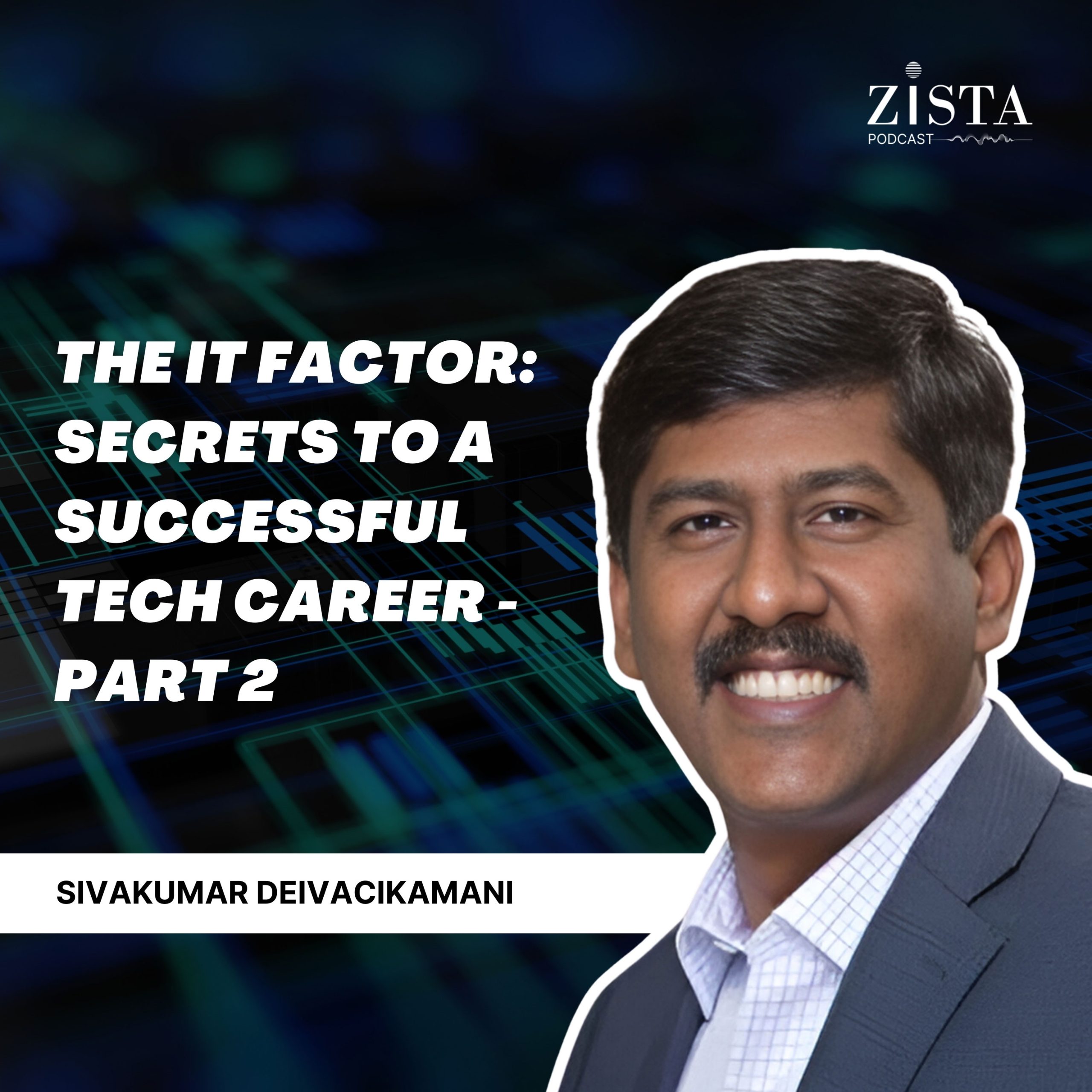IoT: How Electronics Manufacturing is driving Sustainability in India
Welcome to “The Zista Podcast”! Today, we’re thrilled to have Ashish Chinthal, a seasoned professional with over 20 years of experience in the business and technology domain. An alumnus of Stanford LEAD, with an MBA from NMIMS, and a B.E. in Electronics & Telecommunications from Mumbai University, Ashish’s journey is remarkable. He has excelled in diverse roles, from Business Development to Operations leadership, and currently heads Strategy and Business Operations at Napino Digital Solutions. Join us as we explore his insights and experiences on this episode!
Welcome to The Zista Podcast! Today, we are delighted to feature Ashish, a seasoned expert with over 20 years of experience in the business and technology domain. A Stanford LEAD alumnus with an MBA from NMIMS and a B.E. in Electronics & Telecommunications from Mumbai University, Ashish has excelled in diverse roles such as Business Development, Product Management, and Program Management.
Currently leading Strategy and Business Operations at Napino Digital Solutions, he has also contributed to renowned brands like Lenovo Airtel, Mobileum, and Ernst & Young. Ashish’s involvement in various technology forums and advisory work with AI, IoT, Digital Marketing, and Mobile VAS start-ups further showcases his impact in the industry.
Join us as we explore his remarkable journey and insights on this episode.
Key highlights:
- IoT is revolutionizing electronics design by making devices more intelligent and enabling wireless communication between devices and controllers.
- Power consumption becomes a critical consideration in IoT product design to ensure the longevity of devices, especially those relying on battery power.
- The intelligence layer, utilizing AI logic, filters and processes data from sensors, enabling devices to make actionable decisions based on collected information.
- The evolution of technology, platforms, processes, and protocols is driving significant changes in electronics design and production, leading to more efficient and intelligent electronic appliances.
- IoT engineers or developers play a crucial role in understanding requirements, designing for cost, selecting components, and collaborating with mechanical engineers to create user-friendly and affordable IoT products.
- Electronics manufacturing in India enhances the country’s stability by reducing import dependency, creating more jobs, boosting GDP, and fostering self-reliance in critical sectors like defense.
Q1. How is IoT altering the design and production of electronics?
A: According to Ashish, the key point he highlighted previously is that electronics are becoming increasingly intelligent, necessitating wireless communication capabilities between these devices and their controllers. This wireless functionality can be achieved through integrated chips (IC) which are added to these devices, enabling them to connect via Bluetooth, WiFi, or cellular connections like 2G, 3G, 4G, or 5G. For specific applications, specialized connectivity options like low radiation (RAM) and NB-IoT (Narrow Band IoT) are available, which are often used in industrial IoT contexts and provided by cellular service providers specifically for IoT.
The most critical aspect here, Ashish explains, is the device’s ability to connect with its controlling device, along with the lifespan of the device itself. In some applications, devices can’t access continuous power from a regular 230V line. For instance, tracking devices on industrial applications such as a mining device or an ice cream cart, which lack constant electricity, rely heavily on battery power. Therefore, power consumption becomes a vital consideration when designing IoT products to ensure the devices’ longevity.
The third essential component is the intelligence layer which uses AI logic to collect and filter data from sensors added to the devices. Given the large volume of data, it’s essential to filter out only necessary information and make actionable decisions based on that data. These decisions could be switching off the device, disabling it, or alerting the user about a potential issue.
The changes in the industry are driven by the evolution of technology, platforms, processes, and protocols, transforming the landscape of electronics design and production. These developments have significantly enhanced the ability of devices to interact, function autonomously, and provide useful insights, leading to more efficient and intelligent electronic appliances.
Q2. What are the roles and responsibilities of an IoT engineer or developer?
A: As Ashish mentioned in the previous episode he says that an IoT developer is someone who can understand the requirement, for example, there could be an audio company based in Europe wanting to build a product, similar to an Alexa. Now, there would be a business analyst, who will work with a developer or an IoT engineer to understand what kind of distance it should support, how far can someone give a command, and what the wattage should be of the speaker deciding how loud it should be, deciding the shape and size, and most importantly these days there’s a term known as design for cost, because he would have the ability to build a product which can come at the top of its game but he would also want a product which can come at five dollars. So building a product also for cost is an important skill set because ultimately that product needs to be sold and there first needs to be a buyer for that product. There have also been disruptions recently in the supply chain, so designing a product for procurement questioning where you can procure the products locally within India at a two kilometer distance from his office versus procuring it from Taiwan, China or Korea. These factors influence whether the components are easily available or there will be a waitlist of six months, causing a direct effect on the pricing of those components as well. All these factors come into play while designing an electronics product. So, it is the cost of design, and this is derived from what requirements are being captured. Once they have all this information, there is component selection where they design the PCB, a firmware coding for the IC’s, coming up with a prototype, they also involve mechanical engineers, because while the electronics engineer can work on the electronics part, the look and feel depends upon the mechanical engineer to make it look beautiful and ergonomically viable for the users. This ensures higher adoption rates and ease to use. So it’s a culmination of mechanical engineering and electronics engineering in order to create a product
Q3. What are some of the challenges faced in the IoT industry?
A: Ashish’s experience offers insight into some of the hurdles faced in the IoT industry. His transition from a role in telecommunications to consulting, and subsequently to manufacturing, brought him face-to-face with new challenges. While he was adept at handling the sales & marketing aspects, and managing customer relations and projects, his understanding of the manufacturing side was limited.
To bridge this gap, Ashish leveraged the expertise of his team, who had spent many years in the industry. Over two years, he learned about the different elements involved in delivering manufacturing services. His journey underscores the need for continuous learning, particularly on the technology front. Although Ashish’s diverse background served him well in handling the business aspects, he needed to acquire new knowledge to fully grasp the technology involved in his work which is what he picked up.
Q4. How is electronics manufacturing helping India become more stable?
A: Ashish says that electronics manufacturing plays a crucial role in enhancing India’s stability. Firstly, he points out the reduction of dependency on imports which helps to decrease the country’s trade deficit.
Secondly, the growth of domestic industries through electronics manufacturing creates more jobs, positively impacting India’s GDP. This improvement translates into increased purchasing power, a critical element in efforts to lift more citizens out of poverty.
Finally, Ashish highlights the value of self-reliance in specific industries like defense. In such sectors, dependency on another country isn’t viable, necessitating the creation of a domestic manufacturing ecosystem. Therefore, fostering the IoT industry plays a crucial role in promoting self-reliance and further contributing to India’s stability.




